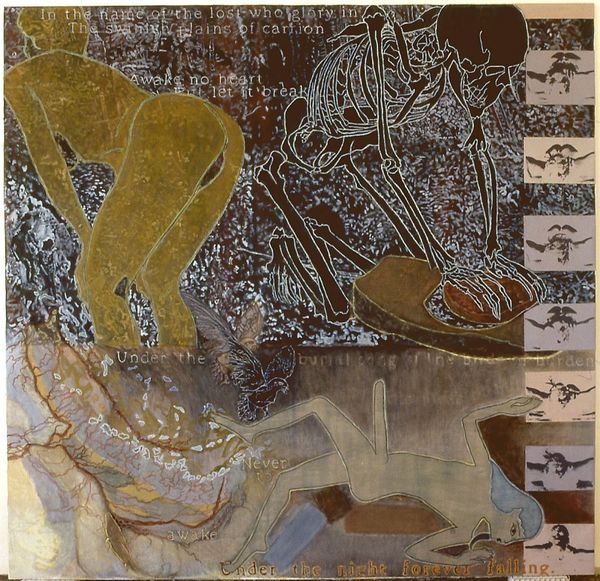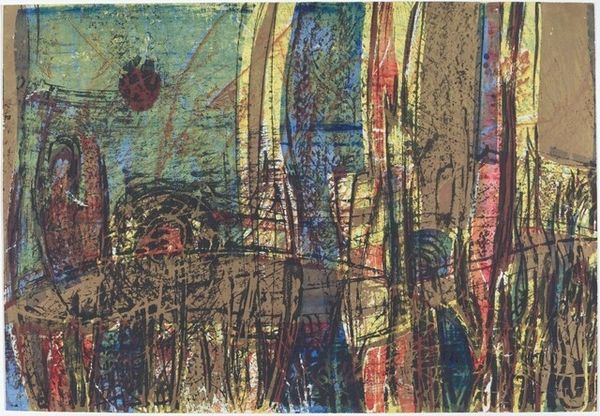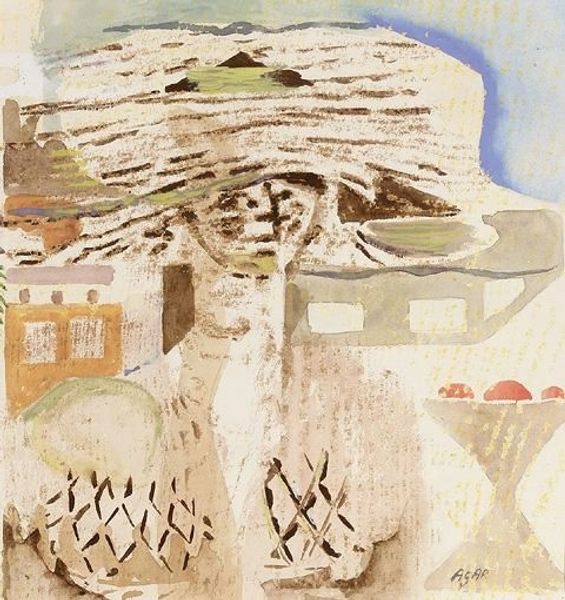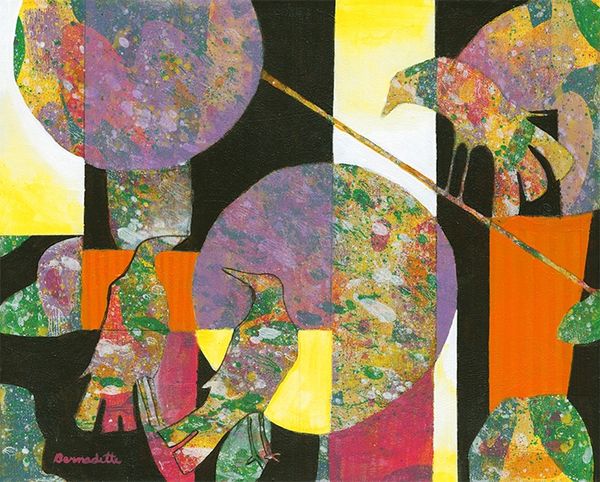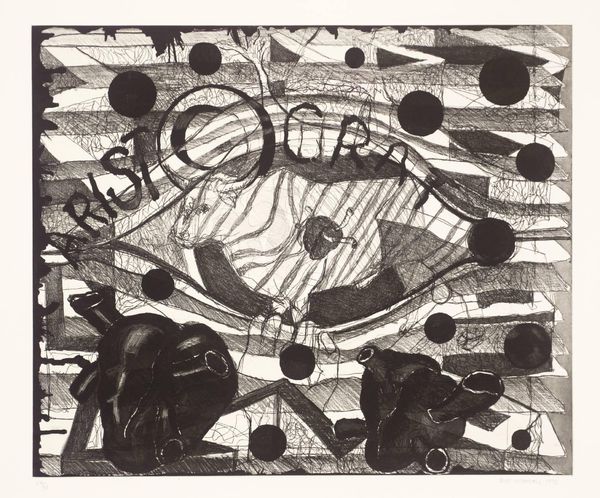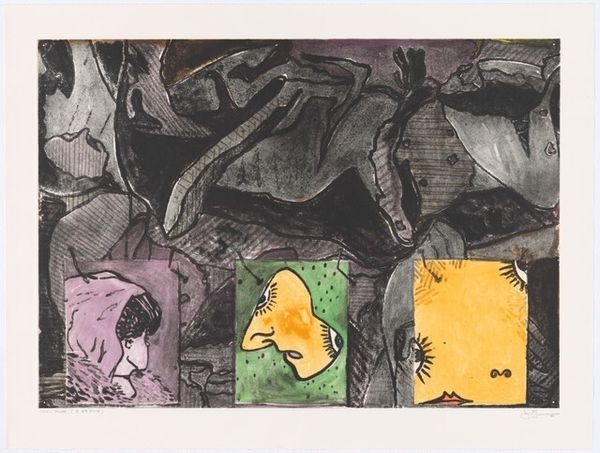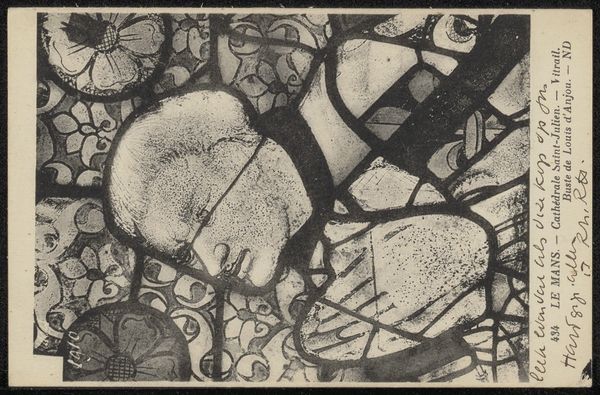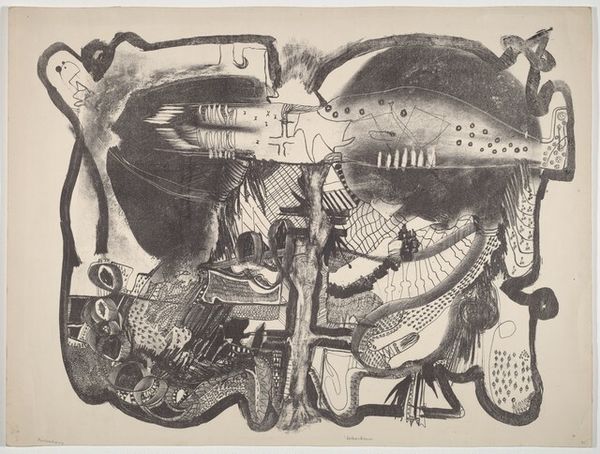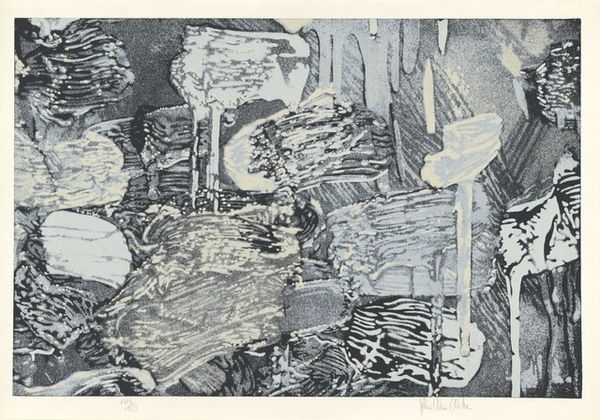
print, etching
# print
#
etching
#
etching
Copyright: National Gallery of Art: CC0 1.0
Editor: This print, simply titled "Still Life" by René Genis, is rendered through etching techniques. I find the colour palette strangely compelling. What's your interpretation? Curator: Let us deconstruct the formal elements. Note the strategic use of the table’s circular form to echo the shapes of the fruit, guiding the viewer's eye. The corn stalks, in contrast, introduce a verticality that punctuates the horizontality of the tabletop. Editor: So it's a conversation between those forms. How do the muted colours play into this dynamic? Curator: The earthy tones establish a cohesive visual language. Observe how Genis employs varying densities of hatching and cross-hatching to sculpt volume and define light and shadow, despite the flattened perspective. What philosophical interpretation can you attach to these symbolic figures and techniques? Editor: It creates depth without traditional shading. The weaving on the basket holding the corn repeats in the texture on the bottle. I wonder what Genis hoped to achieve in these textural details. Curator: The interplay of these visual elements constructs an evocative dialogue, doesn't it? I suggest that each mark, line, colour represents a conscious decision that ultimately expresses something through abstract signs. Editor: That emphasis on structural composition brings out a sense of rhythm and organisation. I didn't catch that initially. Curator: Yes. It is rewarding to focus on how these core forms and signs weave into larger significance. Editor: It seems there is a logic in visual terms—it exists within the framework he created. Curator: Precisely. Art exists as an exploration of how shapes, marks, and forms construct reality, and affect experience, independent of external references.
Comments
No comments
Be the first to comment and join the conversation on the ultimate creative platform.

